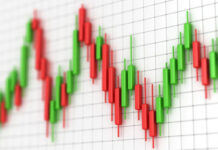Another hawkish speech from the Federal Reserve (Fed) Chair Jerome Powell turned into a risk rally yesterday. Equities gained, and the bond yields fell.
Yet, yesterday’s speech from the Fed Chair Powell was hawkish. He said that the Fed may hike the rates more than what’s priced in if the jobs market remains unexpectedly strong.
He said that disinflation is at the early stages and that the ride will probably be ‘bumpy’.
He had said last week that the Fed needs ‘substantially more evidence’ to declare victory over inflation.
But in vain. Investors focused on the fact that he appeared just as hawkish as he has always been, that he didn’t promise a 50bp hike at next meeting, and that he said that the Fed won’t actively shrink its balance sheet for at least a few years.
The S&P 500 still eased when Powell said they need ‘substantial evidence’ that inflation slowed, but finally, the index erased gains and ended the session by 1.30% higher. Nasdaq jumped more than 2%. The US 2-year yield eased – as if Powell hasn’t said that the rates will go higher than people anticipate.
And the US dollar jumped, interestingly. The dollar index shortly spiked above its 50-DMA, but rapidly came below this level.
If investors are not convinced by what Powell says, they could be easily convinced if next week’s inflation data in the US came with a bad surprise.
Until then, no one can guarantee how sustainable the latest gains are.
Good news, bad news
There are good and bad news on the wire.
The bad news is that Dell announced it will lay off 6650 workers, and Zoom will let go around 15% of its workforce, which is around 1300 workers. Together it’s nearly 8000 more jobs lost in the tech space.
The good news is, it will probably not impact the US jobs data – as tech layoffs have been very loud in media but very timid when it comes to their impact on jobs data.
The other goods news is that half of the S&P500 companies already reported earnings, and earnings per share fell 2.8% so far. This is well below the 3.3% decline expected by analysts. It justifies a part of the correction.
But fundamentally, we can tell that the tech companies are not flourishing just by looking at the number of people they let go.
And well, the US yield curve remains well inverted, warning that recession is still on the cards.
In the FX
Yesterday’s rally in the US dollar is challenging the latest trends and dynamics.
The EURUSD tipped a toe below its latest bullish trend base, and below its 50-DMA yesterday, and the pair is just at the edge of bullish trend again this morning, with no guarantee that it won’t slide further.
Cable rebounded before hitting its 200-DMA, at 1.1950, and is back above the 1.20 mark this morning.
The British National Institute of Economic and Social Research said that the UK may avoid recession this year. But they are the only ones being this optimistic… and even they think that millions could be unable to pay their bills, a weird way of avoiding recession…
But happily, for energy investors, Jeremy hunt said yesterday, as a response to record profit announced by BP, that they will not increase windfall tax on oil and gas companies.
BP share’s price jumped nearly 8% to above our mid-term 500p target.
Crude oil jumped more than 4% as API revealed a 2-mio-barrel decline in US stockpiles. But gasoline inventories jumped more than 5 mio barrels during the same week. That could limit the upside potential triggered by data.
In precious metals, gold is better bid for the third session, even though US President Joe Biden’s State of the Union speech went without gaffes or personal remarks which could’ve escalate tensions with China or Russia.
The size of the bullish move in gold could however remain capped by the strength of the US dollar. A thick layer of offers is seen into the $1900 level.













